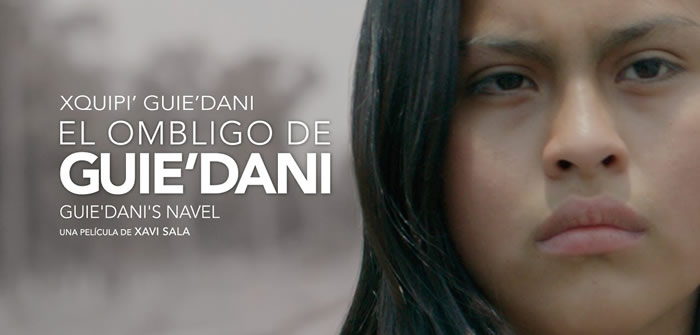Featuring a star-making performance by Sótera Cruz, a young actress who plays the title character, this unique coming-of-age narrative explores the racism encountered by indigenous people in Mexico. Guie’dani (Cruz) is a Zapotec teenager who moves to Mexico City with her mother to work as a housekeeper for an upper-middle-class family. There, their language is mocked, and psychological subjugation is inflicted. Yet, Guie’dani rejects the life of servitude and seeks her own identity through a friendship with another rebellious teen.
GUIE’DANI’S NAVEL, a brilliant film directed by Xavi Sala is among the films screened in Other Mexico section of 2019 Hola Mexico Film Festival.
At Cinema Without Borders & CineEqual, we had the opportunity of interviewing Xavi Sala about making of GUIE’DANI’S NAVEL.
Bijan Tehrani: What motivated you to make GUIE’DANI’S NAVEL?
Xavi Sala: Since I met the Zapotec people ten years ago, through the editing of some documentaries on the Isthmus of Tehuantepec, I was very impressed by their strength in the struggle to preserve their language and traditions against the discrimination and intolerance of other dominant territories. Despite the social, economic and historical differences between the original peoples in Mexico and Catalan Countries (where I am originally from, although I’m Mexican), there is a common sense of resistance: of preserving a language and a culture against those who want to annihilate us.
In the case of Guie’dani’s Navel there are phrases taken literally from my childhood, the aggression against the Catalan identity still endures, like the Zapotec. I am interested in social issues that confront me and the audience, and that have a universal dimension. I think it’s important to have a deep connection with the topics that I deal with in my films.
BT: GUIE’DANI’S NAVEL for me ia a social justice film about addressing the issue of different social classes masterfully, was this your goal also?
XS: Yes, I agree with you but the main topic for me is the fight for the identity, an issue that has always interested me a lot and that I had already dealt with in some of my short films. I feel the most important characteristic of identity is language. Of course, the other important items of the film are classism and racism.
BT: What is so clever in GUIE’DANI’S NAVEL is that the family Guie’dani and her mother serve, are relatively nice and Guie’dani’s anger does not look justified in the surface. It is deep based on major issues she has to face for the rest of her life. How did you come up with this set up and characters?
XS: The bullet hides a deep hypocrisy. Guie’dani rebels against the rules because she is not submissive, she wants to escape of the jail, she doesn’t want to be a slave. I think many Mexicans do not realize that they do not realize.
BT: GUIE’DANI’S NAVEL casting is amazing, specially Sótera Cruz performance as Guie’dani, how did you go about casting of your film and how did you work with your actors?
XS: I wanted authentic actors, to give truth to the story. I did a meticulous cast of indigenous girls and women (most of whom had no acting experience) in the Isthmus of Tehuantepec, and the rest of the actors in Mexico City. It took me two years to find Sótera Cruz. I was captivated by his look, what he says without saying, his contained anger, his strength and his emotion, similar to me. I mixed actors with no experience with a few who did. For me the direction of actors is done in the cast.
BT: At the end of the GUIE’DANI’S NAVEL, we are left with a question, has Guie’dani given up on her struggle against injustice? What did you had in mind with that ending?
XS: Guie’dani has a strong personality, all the film she says she wants to come back to his village, I’m sure she will get it! I wanted to end the film before her decision to escape, to trigger a reflection in the audience. I feel she lost a battle but not the war.
BT: Please tell us about the visual style of your film
XS: I wanted to make a film with a documentary visual style. I tried to use hand-held photography, natural lighting, real locations, and real costumes. We had some visual referents from Europe, like Dardenne Brothers and Andrea Arnold films. It was very important for me the contrast between the field and the big city trought the light.
BT: What is your next project?
XS: It’s entitled The Silence Virgin, it’s a reflection about the silence and the impunity in Mexico. The confrontation of a woman with her mother, her girl lover and her own life.

